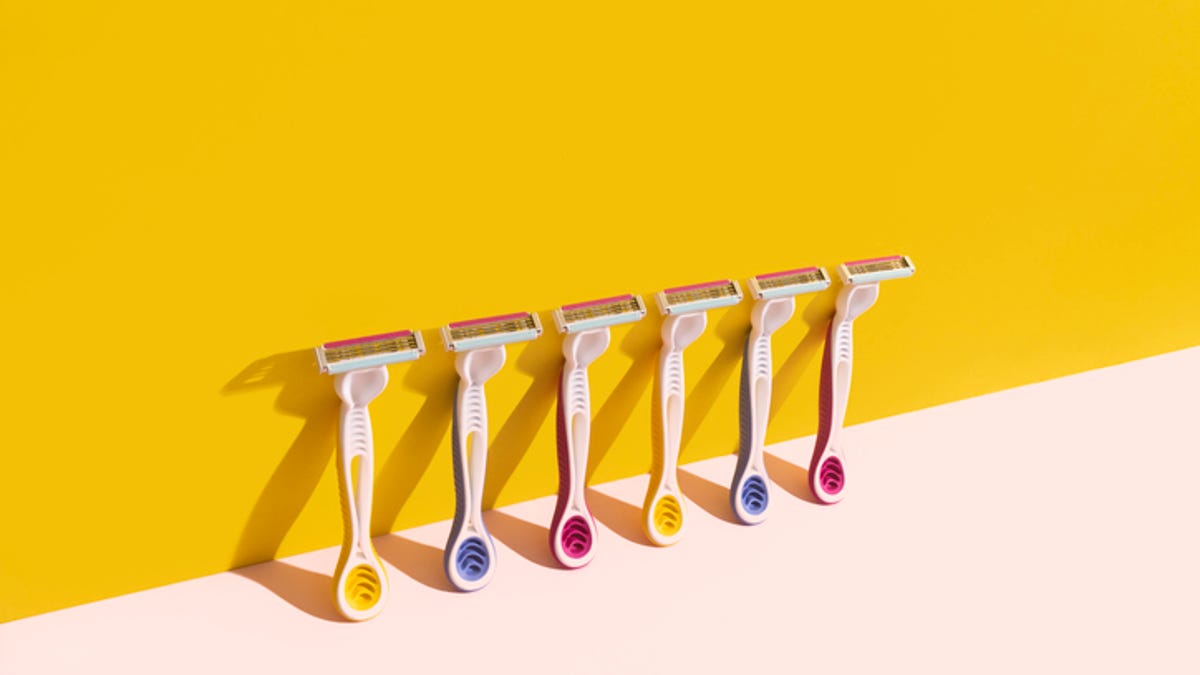 Why You Can Trust CNET
Why You Can Trust CNET You're Not Replacing Your Razor Enough (and It's a Health Risk)
Not replacing your razor as you should can lead to serious health issues.

Most people don't keep track of how many times they've used their current razor. Usually, they use it until it won't take the hair off anymore. It's a common practice, but it might put your health at risk without realizing it.
An old razor gets dull and gunked up with dead skin cells and bacteria, which can cause skin irritation, cuts and infections. So when should you replace your razor? Let's talk about how to tell and what you can do to protect your health.
Also, see which foods you should eat for healthy skin and if you should add a collagen supplement to your diet.
How often should you change your razor blade?
Per the American Academy of Dermatologists' recommendations, you should change your razor head every five to seven shaves. For many, that is roughly every two to three weeks, depending on how often you shave.
Some factors that influence how often you need to replace your razor include the quality of the blades, where you are shaving, the density of your hair and how well you take care of your razor.
You can use a dull razor and get a good enough shave. However, not only can that irritate your skin, but it opens you up to the chance of infection. Think about what you do with a razor -- scrape it across your skin to slice through hair. You remove any dirt and germs you picked up that day with each stroke. The bacteria multiplies between the blades if you don't properly rinse the razor. Then when you use it again, you transfer all the bacteria festering back onto your skin and into the microscopic openings that happen when you shave.
Not to mention where your razor lives. Most people leave their razors in the shower. It's convenient; it's where you use it. However, the steam and wetness of the shower cause it to collect bacteria and rust. Don't store your razor blade in your shower. Instead, store it in a dry place, like a drawer.
Even if you can get a decent shave with an old razor, it's best to replace it to avoid potential infection.
5 signs you need to change your razor
Using an old razor doesn't just compromise the quality of your shave; it can lead to bigger health concerns like razor burn, cuts or infection. But how do you know if it's time to change your razor? There are a few of the key signs that you should be watching for.
- Your skin is irritated after your shave.
- You're not getting as close of a shave as you used to or your razor is missing spots entirely.
- Your razor has visible build-up on and around the blades.
- Instead of cutting through the hair, you can feel your hair being pulled when shaving.
- You're getting more ingrown hairs than normal.
How can I make my razor last longer?
If you don't shave often and don't have dense hair, your razor may last longer than five to seven uses as long as you take care of it. The key is to keep clean. The issue and potential danger of using an old razor are spreading bacteria and leading to infection through cuts and nicks.
Always use shaving cream or balm before you shave to take the extra stress off the blade. This will help keep it from getting prematurely dull or chipping the blade. After use, make sure you thoroughly rinse the razor. You can also disinfect your razor with rubbing alcohol to reduce bacterial growth.
Remember, if your razor isn't rinsing clean, it's time to replace it.
For more personal care tips, learn how to naturally treat itchy eyes and how to oil pull correctly.

